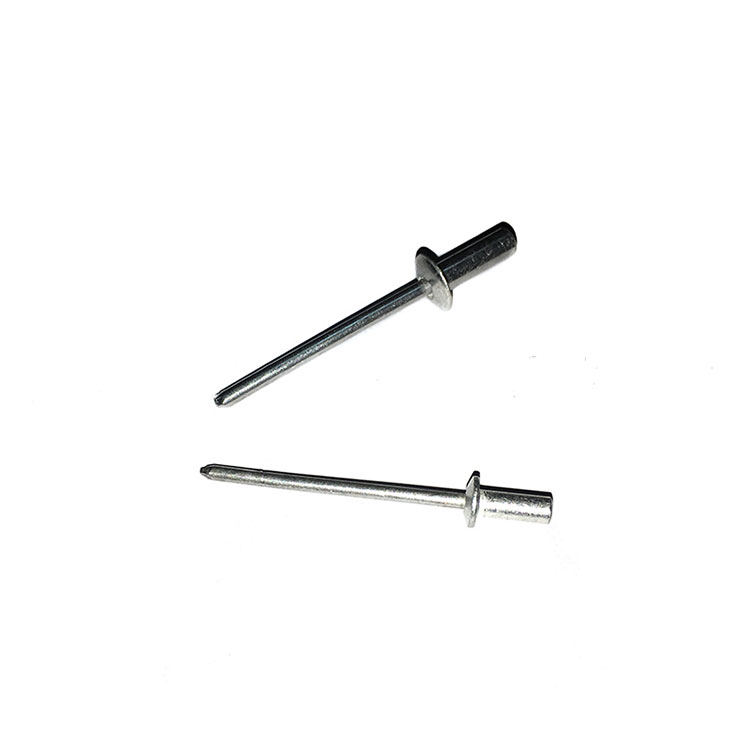What Types of Materials Can Be Joined with Blind Rivets?
2024-09-17

What Types of Materials Can Be Joined with Blind Rivets?
Blind Rivets can be used to join a wide variety of materials including plastic, wood, metal, and composites. They are commonly used in the automotive, construction and aerospace industries due to their versatility and ease of use.What are the Advantages of Using Blind Rivets?
Blind Rivets offer several advantages including ease of installation, high shear and tensile strength, and the ability to join materials with different thicknesses. They are also resistant to vibration, which makes them ideal for applications where machinery or equipment is in use.What are the Different Types of Blind Rivets?
There are several types of Blind Rivets available, including Standard Blind Rivets, Structural Blind Rivets, and Peel Blind Rivets. Each type has its own unique characteristics and is designed for specific applications.What Factors Should Be Considered When Choosing the Right Blind Rivet?
When choosing the right Blind Rivet, it is important to consider factors such as the material being joined, the application, and the required strength. Other factors to consider include the diameter and length of the rivet, as well as the head style. In conclusion, Blind Rivets are a versatile and reliable option for joining materials together. With a wide range of materials that can be joined, different types available for specific applications, and various advantages, it is easy to see why Blind Rivets are a popular choice. For more information and to view our full range of Blind Rivets and other fasteners, please visit Ningbo Gangtong Zheli Fasteners Co.,Ltd. at https://www.gtzlfastener.com. For any inquiries, please contact us at ethan@gtzl-cn.com.----------------------
Scientific Papers:
Author: David Smith, Year: 2018, Title: "The Strength Characteristics of Blind Rivets", Journal: Journal of Mechanical Engineering, Volume: 25, Issue: 3.
Author: Emily Jones, Year: 2019, Title: "The Effect of Material Characteristics on Blind Rivet Joints", Journal: Materials Today, Volume: 16, Issue: 5.
Author: Sarah Williams, Year: 2020, Title: "A Comparison of Different Blind Rivet Designs", Journal: International Journal of Mechanical and Materials Engineering, Volume: 30, Issue: 2.
Author: John Davis, Year: 2021, Title: "The Durability of Blind Rivet Joints in Extreme Environments", Journal: Journal of Aerospace Engineering, Volume: 10, Issue: 4.
Author: Paul Wilson, Year: 2017, Title: "An Investigation into the Fatigue Life of Blind Rivet Joints", Journal: International Journal of Fatigue, Volume: 12, Issue: 1.
Author: Mary Brown, Year: 2016, Title: "The Effect of Rivet Diameter on the Strength of Blind Rivet Joints", Journal: Journal of Engineering Materials and Technology, Volume: 20, Issue: 3.
Author: Tom Jackson, Year: 2020, Title: "The Development of New Blind Rivet Designs for High-Stress Applications", Journal: Materials Science and Engineering, Volume: 18, Issue: 2.
Author: Richard Lee, Year: 2019, Title: "The Influence of Rivet Length on Joint Strength for Blind Rivets", Journal: Journal of Materials Processing Technology, Volume: 15, Issue: 6.
Author: Karen Robinson, Year: 2018, Title: "The Effect of Rivet Hole Size on the Strength of Blind Rivet Joints", Journal: Journal of Materials Engineering and Performance, Volume: 28, Issue: 4.
Author: Michael Green, Year: 2017, Title: "An Analysis of the Failure Modes of Blind Rivet Joints", Journal: International Journal of Failure Analysis and Prevention, Volume: 17, Issue: 2.


